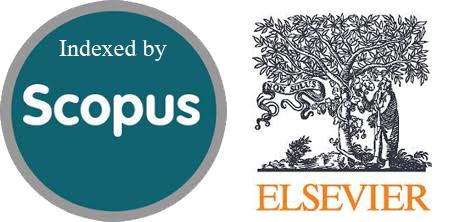Wilms’ Tumor 1 Gene Expression as a Predictive Marker for Clinical Outcome of Acute Myeloid Leukemia in Iraqi Population: A Prospective Study
DOI:
https://doi.org/10.54133/ajms.v7i2.1410Keywords:
Acute Myeloid Leukemia, Measurable molecular marker, Prediction, Wilms' tumor gene 1Abstract
Background: Wilms' tumor gene 1 (WT1), a tumor-associated antigen (TAA), is expressed in many types of cancer. Most acute leukemia patients have a quantitatively detectable and strong expression of it. Objectives: To analyze WT1 expression levels as a predictor of clinical outcomes at the time of diagnosis of de novo leukemia and to monitor tumor progression during treatment. Methods: A total of 71 patients with acute myeloid leukemia (AML) were separated into two groups: twenty-nine de novo AML patients upon presentation and 25 with AML at the time of initial induction. The second induction included 17 AML patients and ten healthy volunteers who served as controls in this study. The WT1 gene was tested using a real-time PCR with the Cyber Green assay. Results: Patients with acute myeloid leukemia had considerably greater levels of WT1 gene expression than controls (27.3 vs. 5.5). In terms of clinical outcomes, WT1 gene overexpression was substantially related to non-responsive AML patients compared to complete response at diagnosis (27.3 vs. 22.15). However, there is no substantial difference between instances following induction. Conclusions: The WT1 tumor antigen may serve as an early diagnostic for acute leukemia prognosis. Improved clinical outcomes have been linked to reduced WT1 levels. A high amount, on the other hand, was linked to a poor prognosis for people with AML, although more research is needed.
Downloads
References
Chennamadhavuni A, Lyengar V, Mukkamalla SK, Shimanovsky AS, (Eds.), Leukemis, StatPearls Publishing; Treasure Island, FL, USA: 2023.
Wang F, Lv H, Zhao B, Zhou L, Wang S, Luo J, et al. Iron and leukemia: new insights for future treatments. J Exp Clin Cancer Res. 2019;38(1):406. doi: 10.1186/s13046-019-1397-3. DOI: https://doi.org/10.1186/s13046-019-1397-3
Gielis S, Donovan Flumens D, Heijden S, Versteven M, De Reu H, Bartholomeus E, et al. Analysis of Wilms’ tumor protein 1 specific TCR repertoire in AML patients uncovers higher diversity in patients in remission than in relapsed. Ann Hematol. 2024. doi: 10.1007/s00277-024-05919-1. DOI: https://doi.org/10.1007/s00277-024-05919-1
Aydin S, Schmitz J, Dellacasa C, Dogliotti I, Luisa Giaccone L and Busca A. WT1 expression is associated with poor overall survival after azacytidine and DLI in a cohort of adult AML and MDS patients. Cancers. 2024;16:3070. doi: 10.3390/cancers16173070. DOI: https://doi.org/10.3390/cancers16173070
Deng DX, Wen JJ, Cheng YF, Zhang XH, Xu LP, Wang Y, et al. Wilms’ tumor gene 1 is an independent prognostic factor for pediatric acute myeloid leukemia following allogeneic hematopoietic stem cell transplantation. BMC Cancer. 2021;21:1-2. doi: 10.1007/s00277-021-04488-x. DOI: https://doi.org/10.1186/s12885-021-08022-0
Lazzarotto D, Candoni A. The role of wilms’ tumor gene (WT1) expression as a marker of minimal residual disease in acute myeloid leukemia. J Clin Med. 2022;11(12):3306. doi: 10.3390/jcm11123306. DOI: https://doi.org/10.3390/jcm11123306
Marry M. van den Heuvel-Eibrink, (Eds.), WILMS TUMOR. Codon Publications, Australia. 2016; P.5. doi: 10.15586/codon.wt.2016. DOI: https://doi.org/10.15586/codon.wt.2016
Bergmann L, Miething C, Maurer U, Brieger J, Karakas T, Weidmann E, et al. High levels of Wilms' tumor gene (wt1) mRNA in acute myeloid leukemias are associated with a worse long-term outcome. Blood. 1997;90(3):1217-1225. doi: 10.1182/blood.V90.3.1217. DOI: https://doi.org/10.1182/blood.V90.3.1217.1217_1217_1225
Lyu X, Xin Y, Mi R, Ding J, Wang X, Hu J, et al. Overexpression of Wilms tumor 1 gene as a negative prognostic indicator in acute myeloid leukemia. PloS One. 2014;9(3):e92470. doi: 10.18632/oncotarget.3519. DOI: https://doi.org/10.1371/journal.pone.0092470
Nejatifar F, Rostami S, Kasaeian A, Vaezi M, Kamranzadeh H, Mousavi SA, et al. Incidence and Prognostic Impact of WT-1 Gene Exon7 and 9 Mutations in Acute Promyelocytic Leukemia. Int J Hematol Oncol Stem Cell Res. 2022;16(2):74. doi: 10.18502/ijhoscr.v16i2.9199. DOI: https://doi.org/10.18502/ijhoscr.v16i2.9199
Rautenberg C, Pechtel S, Hildebrandt B, Betz B, Dienst A, Nachtkamp K, et al. Wilms' tumor 1 gene expression using a standardized European leukemianet-certified assay compared to other methods for detection of minimal residual disease in myelodysplastic syndrome and acute myelogenous leukemia after allogeneic blood stem cell transplantation. Biol Blood Marrow Transplantat. 2018;24(11):2337-2343. doi: 10.1016/j.bbmt.2018.05.011. DOI: https://doi.org/10.1016/j.bbmt.2018.05.011
Huh HJ, Park CJ, Jang S, Seo EJ, Chi HS, Lee JH, et al. Prognostic significance of multidrug resistance gene 1 (MDR1), multidrug resistance-related protein (MRP) and lung resistance protein (LRP) mRNA expression in acute leukemia. J Korean Med Sci. 2006;21(2):253-258. doi: 10.3346/jkms.2006.21.2.253. DOI: https://doi.org/10.3346/jkms.2006.21.2.253
Livak KJ. Relative quantification of gene expression: ABI Prism 7700 sequence detection system. Appl Biosys User Bull. 1997;2. (updated 2001).
Hou HA, Huang TC, Lin LI, Liu CY, Chen CY, Chou WC, et al. WT1 mutation in 470 adult patients with acute myeloid leukemia: stability during disease evolution and implication of its incorporation into a survival scoring system. Blood. 2010;115(25):5222-5231. doi: 10.1182/blood-2009-12-259390. DOI: https://doi.org/10.1182/blood-2009-12-259390
Ujj Z, Buglyó G, Udvardy M, Beyer D, Vargha G, Biró S, Rejtő L. WT1 expression in adult acute myeloid leukemia: assessing its presence, magnitude and temporal changes as prognostic factors. Pathol Oncol Res. 2016; 22:217-221. doi: 10.1007/s12253-015-0002-0. DOI: https://doi.org/10.1007/s12253-015-0002-0
Donia HM, Elsweify NM, Farahat NM, Nadwan EA. Wilms tumor 1 gene expression in acute myeloid leukemia: prognostic significance and usefulness in minimal residual disease monitoring—a case–control study. Egypt J Med Hum Genet. 2022;23(1):109. doi: 10.1186/s43042-022-00291-z. DOI: https://doi.org/10.1186/s43042-022-00291-z
Rampal R, Figueroa ME. Wilms tumor 1 mutations in the pathogenesis of acute myeloid leukemia. Haematologica. 2016;101(6):672-679. doi: 10.3324/haematol.2015.141796. DOI: https://doi.org/10.3324/haematol.2015.141796
Steger B, Floro L, Amberger DC, Kroell T, Tischer J, Kolb HJ, et al. WT1, PRAME, and PR3 mRNA expression in acute myeloid leukemia (AML). J Immunother. 2020;43(6):204-215. doi: 10.1097/CJI.0000000000000322. DOI: https://doi.org/10.1097/CJI.0000000000000322
Niktoreh N, Weber L, Walter C, Karimifard M, Hoffmeister LM, Breiter H, et al. Understanding WT1 alterations and expression profiles in hematological malignancies. Cancers. 2023;15(13):3491. doi: 10.3390/cancers15133491. DOI: https://doi.org/10.3390/cancers15133491
Qi XW, Zhang F, Wu H, Liu JL, Zong BG, Xu C, et al. Wilms' tumor 1 (WT1) expression and prognosis in solid cancer patients: a systematic review and meta-analysis. Sci Rep. 2015;5(1):1-9. doi: 10.1038/srep08924. DOI: https://doi.org/10.1038/srep08924
Yoon JH, Kim HJ, Shin SH, Yahng SA, Lee SE, Cho BS, et al. Serial measurement of WT1 expression and decrement ratio until hematopoietic cell transplantation as a marker of residual disease in patients with cytogenetically normal acute myelogenous leukemia. Biol Blood Marrow Transplant. 2013;19(6):958-966. doi: 10.1016/j.bbmt.2013.03.013. DOI: https://doi.org/10.1016/j.bbmt.2013.03.013
Chen C, Chen Z, Chio CL, Zhao Y, Li Y, Liu Z, et al. Higher expression of WT1 with lower CD58 expression may be biomarkers for risk stratification of patients with cytogenetically normal acute myeloid leukemia. Technol Cancer Res Treat. 2021;20:15330338211052152. doi: 10.1177/15330338211052152. DOI: https://doi.org/10.1177/15330338211052152
Zhao S, Pan H, Guo Q, Xie W, Jin J, Wang J. High WT1 expression associates with unfavorable prognosis in acute myeloid leukemia. Clinic Oncol Hematol. 2021;6(1793):1-6.
Marjanovic I, Karan-Djurasevic T, Ugrin M, Virijevic M, Vidovic A, Tomin D, et al. Use of Wilms tumor 1 gene expression as a reliable marker for prognosis and minimal residual disease monitoring in acute myeloid leukemia with normal karyotype patients. Clin Lymphoma Myeloma Leuk. 2017;17(5):312-319. doi: 10.1016/j.clml.2016.12.006. DOI: https://doi.org/10.1016/j.clml.2016.12.006
Kramarzova K, Stuchly J, Willasch A, Gruhn B, Schwarz J, Cermak J, et al. Real-time PCR quantification of major Wilms’ tumor gene 1 (WT1) isoforms in acute myeloid leukemia, their characteristic expression patterns and possible functional consequences. Leukemia. 2012;26(9):2086-20895. doi.org/10.1038/leu.2012.76. DOI: https://doi.org/10.1038/leu.2012.76
Wu J, Yan H, Xiang C. Wilms’ tumor gene 1 in hematological malignancies: friend or foe? 2023;28(1). doi: 10.1080/16078454.2023.2254557. DOI: https://doi.org/10.1080/16078454.2023.2254557

Downloads
Published
How to Cite
Issue
Section
License
Copyright (c) 2024 Al-Rafidain Journal of Medical Sciences ( ISSN 2789-3219 )

This work is licensed under a Creative Commons Attribution-NonCommercial-ShareAlike 4.0 International License.
Published by Al-Rafidain University College. This is an open access journal issued under the CC BY-NC-SA 4.0 license (https://creativecommons.org/licenses/by-nc-sa/4.0/).











